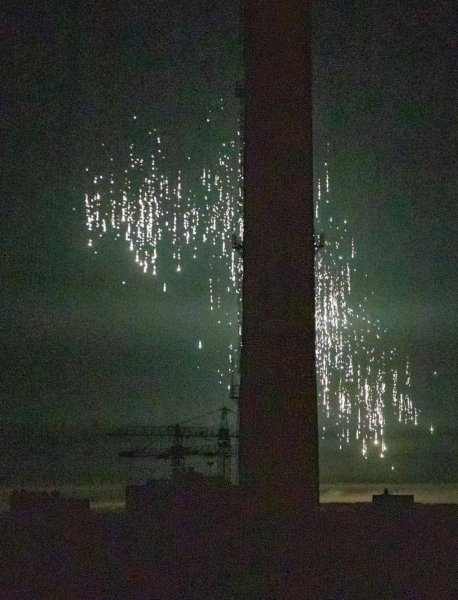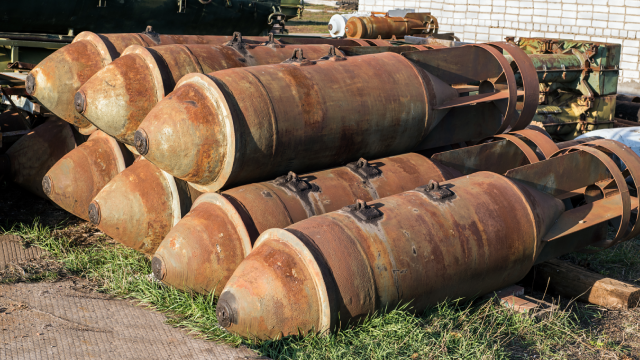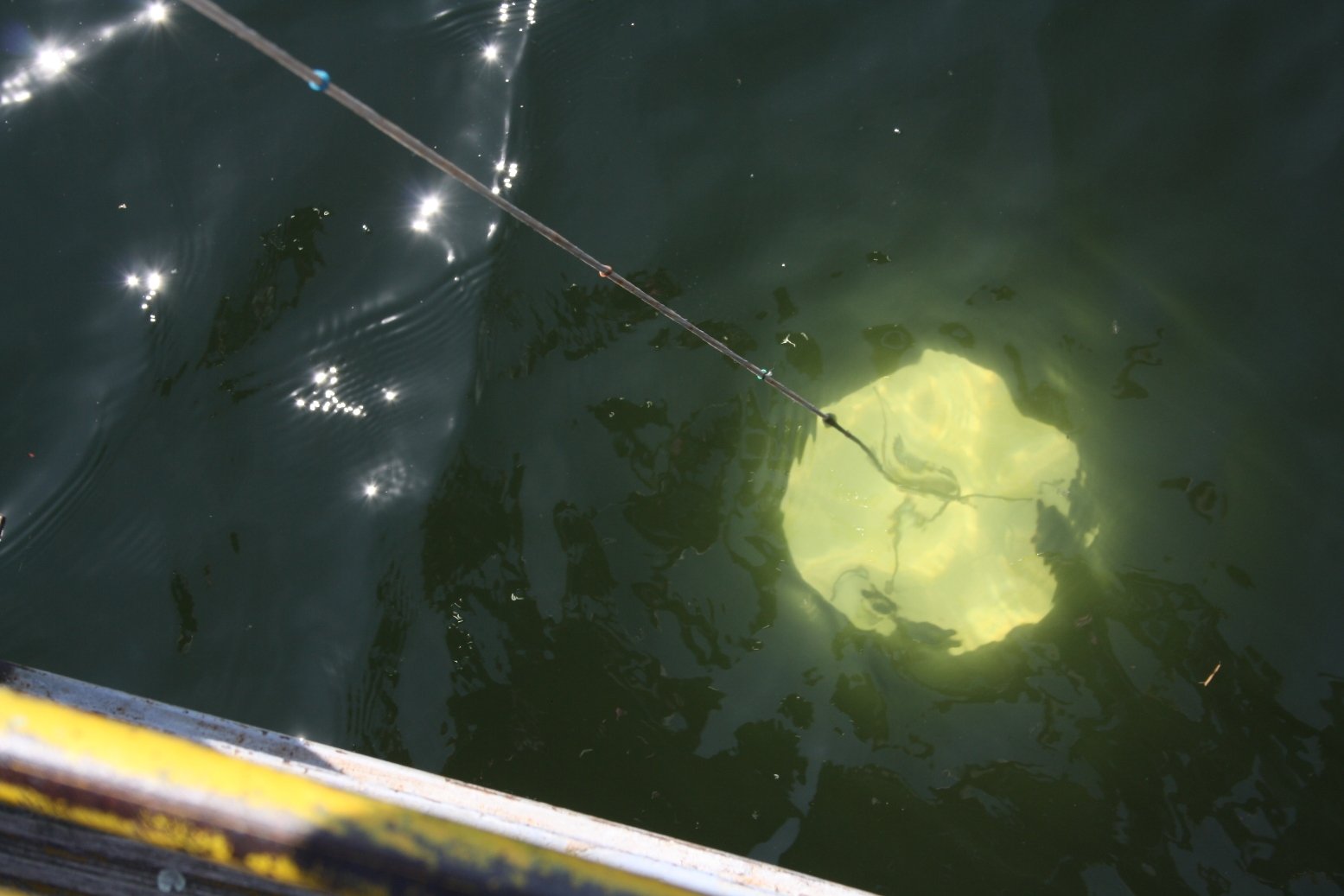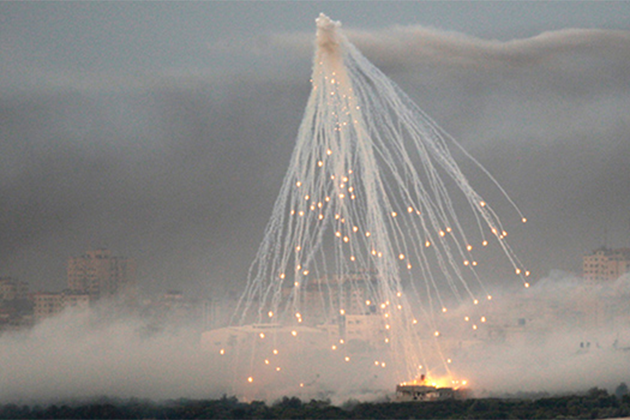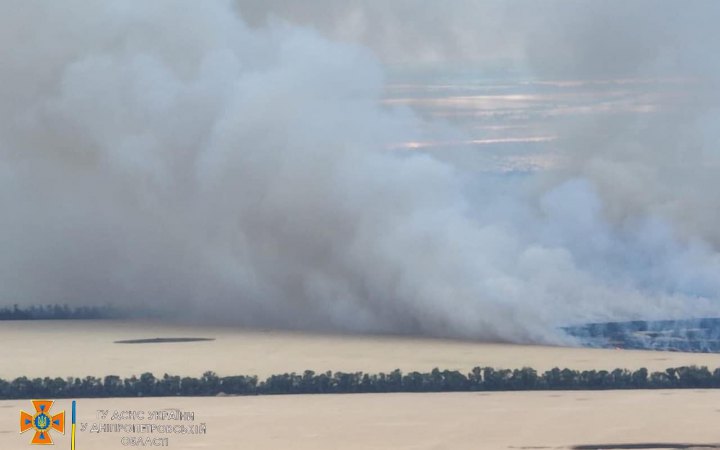
What is the problem?
Russia has repeatedly used phosphorus bombs in Ukraine: in the Sumy region, in Kharkiv, on Snake Island, and in many other places. The OSCE has already confirmed the use of prohibited weapons.
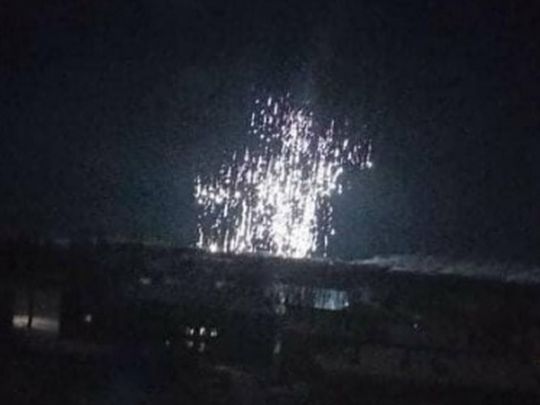
The use of phosphorous ammunition by the Russian military in the city of Popasna, Luhansk region, March 13, 2022
We remind you that phosphorous ammunition is a weapon that contains white phosphorus. Bombs are often filled with phosphorus, but this substance can also be used in mines, artillery shells, rockets, and grenades. It is a dangerous and deadly weapon for humans and the environment. The article describes its mechanism and what to do when the russians use phosphorus weapons.
Phosphorus on the skin and phosphorus in the lungs
Phosphorus has an extremely high combustion temperature of around 800°C, which sometimes varies depending on the type of ammunition, ambient temperature, and humidity. Such phosphorus leaves barely noticeable holes on clothes and charred organic tissues on the skin underneath; bones and even bone marrow can be damaged. In the case of inhalation of a heated mixture, the lungs are burned.
All this leads to severe and painful mutilation, and if phosphorus enters the body, it will cause a painful death. For humans, the lethal dose is 0.05–0.15 grams of phosphorus. A fatal case can occur even if phosphorus burns cover no more than 10% of a person's skin — death occurs due to hypocalcemia (leaching of calcium from the blood) 1-2 days after the event. Such cases were recorded in Vietnam after the phosphorus attacks.
That is why the additional protocols of 1977 to the Geneva Convention prohibit the use of phosphorus munitions, particularly those delivered by air, against military facilities in areas of concentration of the civilian population.

Phosphorus accumulates in water and kills plants, birds, and animals
In the additional protocol to the Geneva Convention, it is no coincidence that it is mentioned that forests and other vegetation cannot be the target of an attack if they are not used to hide enemy forces or other military objectives because the use of heavy weapons in such an area leads to fires. In the case of phosphorus bombs, such fires become large-scale and difficult to extinguish. The incendiary mixture can spread over a large area, up to several hundred meters — depending on the ammunition filled with a dangerous substance. The perimeter of danger from the place of burning is approximately 800 meters – on average, within this radius from each explosion, people, animals, and plants can be poisoned or destroyed by the consequences of explosion and burning.
The use of phosphorus bombs leads to chemical soil pollution. Phosphorous compounds can remain in the ground for several years, and an excess of phosphates in the soil dramatically harms the growth and development of flora and fauna in the war zone. Falling into the ground, phosphorus combustion products and their solutions form salts. It increases the migration of phosphorus compounds from the affected area to areas free from hostilities.
Another danger factor is related to the fact that phosphorus does not change its properties for an indefinite period if it is in water or if other factors prevent sublimation. It means phosphorus particles accumulate in water bodies, swamps, wet soils, and snow. There are known cases when phosphorus was stored in the ground for more than 20 years without significant changes after explosions at the landfill. Even the water used for firefighting can have a toxic effect — when it gets back into the soil, sewage, and groundwater, it will poison them.
Eventually, the phosphorus accumulated in the water enters the bodies of mammals and birds. Phosphorus and the products of its interactions that enter drinking water sources cause phosphate poisoning, allergic reactions, and contact dermatitis. It is hazardous for waterfowl because of the accumulation and long-term storage capacity of phosphorus in the water. Joint studies by Finland, Denmark, the US, Norway, and Canada report deaths of ducks and swans, and fish-eating birds caused by the accumulation of phosphorus particles in their bodies.
In addition, after the territory has been bombarded with phosphorus weapons, dangerous substances from the burning of phosphorus in the form of smoke can settle on agricultural products — plant tissues undergo degradation, and leaves fade and turn yellow. Subsequently, products affected by phosphorus pose a threat to the person who will consume them.
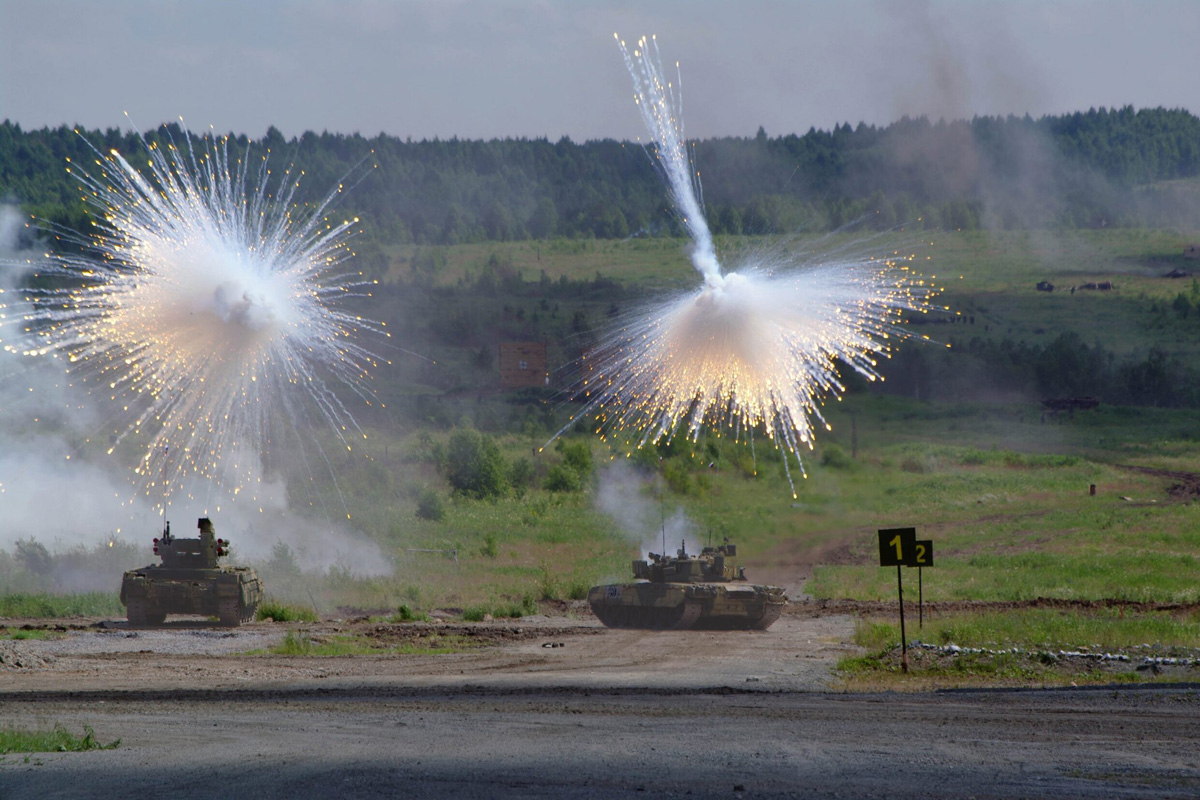
What is the solution?
How to determine the use of phosphorus weapons and save yourself?
It is not difficult to understand that the ammunition used for shelling is filled with phosphorus. The following characteristics will accompany any phosphorus shelling:
- At night, a phosphor projectile is easier to detect, because it will visibly glow. During the day, you need to pay attention to the bright sparks flying out during the explosion and the thick, caustic white smoke. A sign of use is a white coating at the site of the blast.
- Phosphorus used in ammunition is self-igniting. It ignites on contact with oxygen and spreads an incendiary compound that burns until all phosphorus is burned or oxygen is cut off after hitting a target.
If you realize that you are in the zone affected by phosphorous projectiles, your next actions should be as follows:
- The first thing to do is to hide in a safe shelter. It is desirable that the windows and doors are tightly closed, since phosphorus can enter the room in the form of smoke, the danger of which we have already discussed. In case of swallowing or inhaling phosphorus particles, the patency of the respiratory tract should be ensured and the victim's general condition should be monitored. At the first opportunity, a doctor should be consulted.
- In addition, phosphorus contaminates and renders water unfit for drinking, so after shelling it is better to use bottled water and not to use water from open bodies of water near sites where phosphorus bombs are used.
- In case of contact of phosphorus particles on the skin, the Ministry of Health recommends intensive irrigation with cold water. It is the best way to remove white phosphorus from the skin. You should immerse the areas of the affected skin in cold water or cover them with wet wipes. During washing, visible particles of white phosphorus should be removed. Using tweezers is important not to touch the phosphorus itself during removal. Remember that cold water is critical, so care must be taken to prevent victims from developing hypothermia. Using cotton wool and hydrogen peroxide is forbidden when cleaning phosphorus residues from the skin. Cotton wool is easily ignited, and hydrogen peroxide decomposes into water and oxygen, which causes the substance to ignite. In no case should you use creams or ointments
- Eyes should be rinsed with plenty of cool water for at least 15 minutes. Next, you need to apply wet compresses and in no case use creams and ointments, which can only increase the absorption of white phosphorus.
And what about the environment after phosphorus?
The most common method of combating soil contamination is the "earthworks method": contaminated soil is removed by an excavator and transported to a special site that permits handling contaminated soil.
It is a practical and effective solution in places with a very concentrated amount of contaminated material. In the USA, this method of cleaning the environment from war pollutants is used at training grounds where military exercises were conducted.
Such earthworks are often a simple, reliable, and quick solution, but there are also certain difficulties here:
- First, the amount of contaminated soil can be so large that its removal will simply be impractical.
- Second, this method cannot be used if the groundwater level is very close to the ground surface.
- Third, the treatment and disposal of contaminated soil require an environmental permit, and waste management centers usually do not have a license to receive soil contaminated with energetic compounds.
- Fourth, it is also necessary to consider the environmental impact of large machinery digging and moving around the landfill.
Conclusion: the procedure has certain disadvantages. It is logical. Thus, the environmental monitoring expert Maksym Soroka, whom we consulted, confirms: that what works perfectly in laboratory conditions and looks brilliant in theory may not be viable in reality.
Farmers have a plan
Of course, the ingress of phosphorus into soils due to military operations changes their acidity and poisons them. But Maksym Soroka notes: that you shouldn't paint the worst scenarios and become "heralds of the apocalypse":
"Open the standards for applying mineral fertilizers, the permitted amount of phosphorus fertilizers, and convert this mass into phosphorus. And you will be so surprised that, it turns out, we introduce a large amount of phosphorus into the soil anyway. Of course, the soil needs phosphorus, just not in such quantities and not so concentrated. "For many years of using very different mineral fertilizers, agronomists have learned where to add what. There are appropriate technical solutions, where to add which minerals," comments the ecologist.
So, for now, while the war continues, farmers continue to cultivate the fields and regulate the chemical content. But what to do with war consequences in the future, we have to decide after the end of the war:
"We have the experience we had in Syria, Iran — these are small projects done with crazy money from the UN or the Red Cross. They often like to mention the example of the Balkans. Let me remind you: this process started after the war ended, research was done and, based on these researches, reconstruction was already planned. For some reason, everyone who analyzes this experience is silent about this. So far, in the best case, demining will take place, at least metal will also be removed, and farmers will take care of their lands," says the expert.



